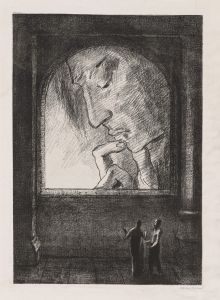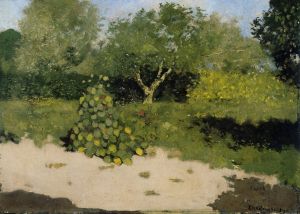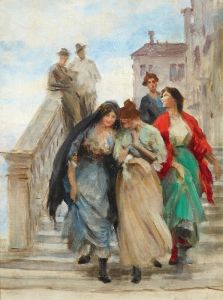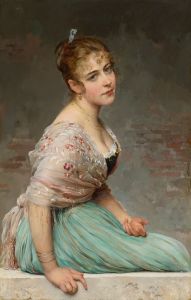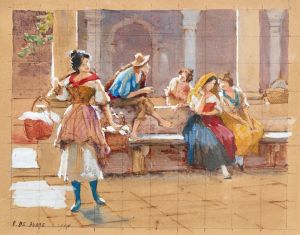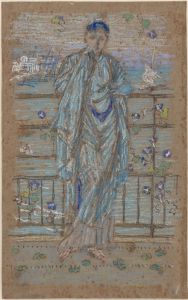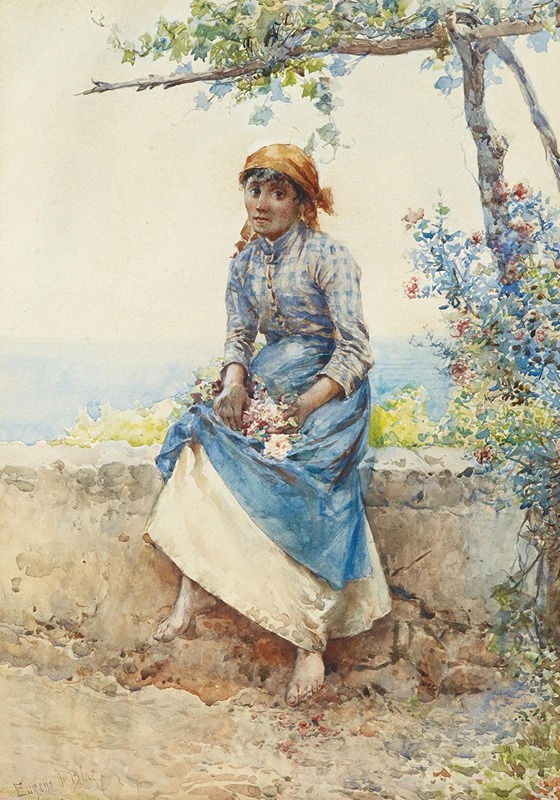
Popolana
A hand-painted replica of Eugen von Blaas’s masterpiece Popolana, meticulously crafted by professional artists to capture the true essence of the original. Each piece is created with museum-quality canvas and rare mineral pigments, carefully painted by experienced artists with delicate brushstrokes and rich, layered colors to perfectly recreate the texture of the original artwork. Unlike machine-printed reproductions, this hand-painted version brings the painting to life, infused with the artist’s emotions and skill in every stroke. Whether for personal collection or home decoration, it instantly elevates the artistic atmosphere of any space.
Eugen von Blaas, an Austrian painter known for his genre scenes and portraits, created the painting "Popolana." Von Blaas was born on July 24, 1843, in Albano Laziale, Italy, and was the son of Karl von Blaas, a noted historical painter. Eugen von Blaas spent much of his life in Italy, which greatly influenced his artistic style and subject matter. He became renowned for his depictions of Venetian life, capturing the charm and vibrancy of the region's people and culture.
"Popolana" is one of von Blaas's many works that illustrate his fascination with everyday life in Venice. The term "popolana" refers to a woman of the people, often depicting a commoner or a member of the lower social classes. Von Blaas's portrayal of such figures is characterized by a sense of realism and attention to detail, which was a hallmark of his work. His paintings often feature women in traditional Venetian attire, engaged in daily activities or leisurely moments, set against the backdrop of the picturesque Venetian landscape.
In "Popolana," von Blaas captures the essence of a Venetian woman with his meticulous brushwork and vibrant use of color. The painting showcases his ability to render textures and fabrics with precision, bringing to life the clothing and accessories typical of the period. Von Blaas's skillful use of light and shadow adds depth to the composition, highlighting the subject's features and expressions. His attention to detail extends to the background elements, which often include architectural features or glimpses of the Venetian canals, providing context and enhancing the narrative quality of the scene.
Eugen von Blaas's work is often associated with the Academic art movement, which emphasized traditional techniques and subjects. His paintings were well-received during his lifetime, and he exhibited regularly at prestigious venues such as the Royal Academy in London and the Paris Salon. Von Blaas's ability to capture the beauty and character of his subjects made him a popular artist among collectors and art enthusiasts.
"Popolana" exemplifies von Blaas's dedication to portraying the human experience with authenticity and charm. His focus on the lives of ordinary people, particularly women, reflects a broader interest in the social dynamics of his time. Through his art, von Blaas offers a glimpse into the world of 19th-century Venice, celebrating its cultural richness and the diversity of its inhabitants.
Today, Eugen von Blaas's paintings, including "Popolana," continue to be appreciated for their technical excellence and evocative storytelling. His works are held in various private collections and museums, where they are admired for their contribution to the genre of 19th-century European painting. Von Blaas's legacy endures as a testament to his skill as an artist and his ability to capture the timeless beauty of everyday life.








